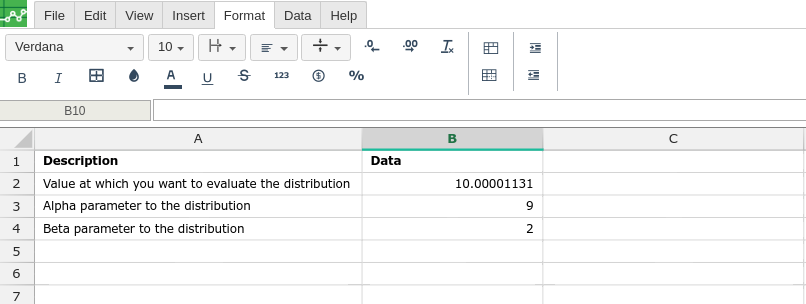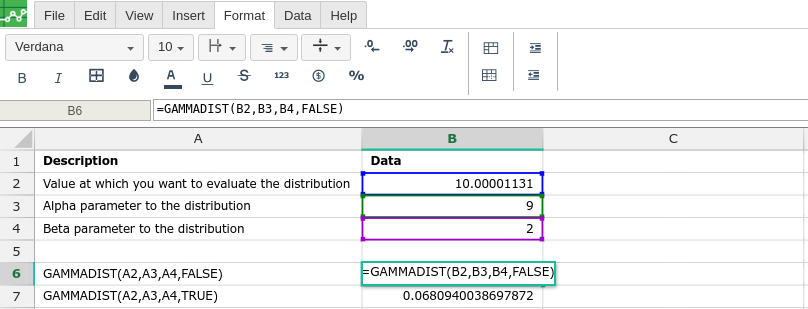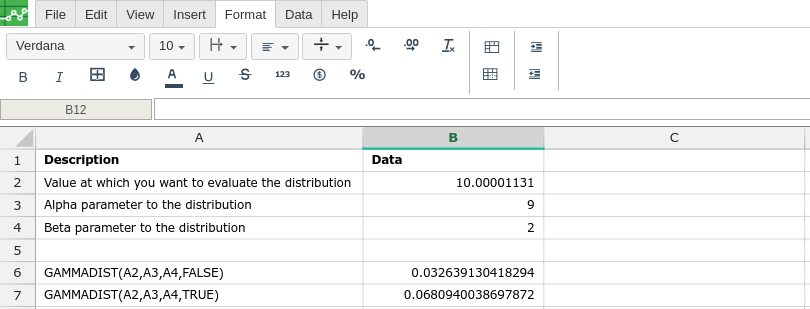GAMMADIST
Definition
Returns the gamma distribution. You can use this function to study variables that may have a skewed distribution. The gamma distribution is commonly used in queuing analysis.
Sample Usage
Syntax
GAMMADIST(x,alpha,beta,cumulative)
The GAMMADIST function syntax has the following arguments:
X Required. The value at which you want to evaluate the distribution.
Alpha Required. A parameter to the distribution.
Beta Required. A parameter to the distribution. If beta = 1, GAMMADIST returns the standard gamma distribution.
Cumulative Required. A logical value that determines the form of the function. If cumulative is TRUE, GAMMADIST returns the cumulative distribution function; if FALSE, it returns the probability density function.
Remarks
If x, alpha, or beta is nonnumeric, GAMMADIST returns the #VALUE! error value.
If x < 0, GAMMADIST returns the #NUM! error value.
If alpha ≤ 0 or if beta ≤ 0, GAMMADIST returns the #NUM! error value.
The equation for the gamma probability density function is:

The standard gamma probability density function is:

When alpha = 1, GAMMADIST returns the exponential distribution with:

For a positive integer n, when alpha = n/2, beta = 2, and cumulative = TRUE, GAMMADIST returns (1 - CHIDIST(x)) with n degrees of freedom.
When alpha is a positive integer, GAMMADIST is also known as the Erlang distribution.
In order to use the GAMMADIST formula, start with your edited Excellentable:

Then type in the GAMMADIST formula in the area you would like to display the outcome:

By adding the values you would like to calculate the GAMMADIST formula for, Excellentable will generate the outcome:

A
|
B
|
|
|---|---|---|
1
|
||
2
|
||
3
|
||
4
|
||
5
|
||
6
|
||
7
|
